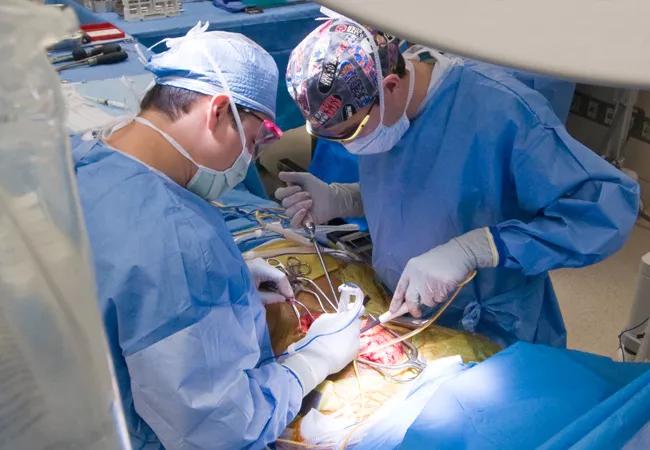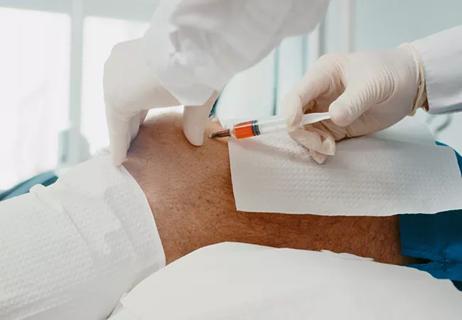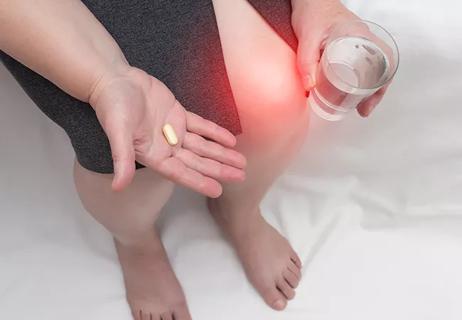Pediatric orthopaedic surgeon discusses newly established pain protocols and research efforts

There is limited evidence-based guidance on analgesic use in pediatric and adolescent patients. State governments provide regulatory oversight in prescribing opioids for pain management, including dosage limits on opioid prescriptions for acute pain. However, institutional and departmental pain protocols vary and are often at the discretion of the treating physician.
Cleveland Clinic is a non-profit academic medical center. Advertising on our site helps support our mission. We do not endorse non-Cleveland Clinic products or services. Policy
This has led some healthcare providers, particularly those performing complex pediatric surgeries, to issue their own guidance on pain protocols. Cleveland Clinic’s Center for Pediatric and Adolescent Orthopaedics is one such group leading the charge to standardize institutional guidelines.
Ryan Goodwin, MD, pediatric orthopaedic surgeon and the center’s director, asserts that well-established protocols are essential because of the range of care provided within the subspecialty and the general lack of clinical guidance on analgesic use in pediatric patients.
“Obviously, what we prescribe is going to be different for a patient with simple arthroscopy versus a fracture pinning versus spine surgery,” Dr. Goodwin says. “These protocols provide a system-based approach to minor, moderate and major procedures along with a recommended analgesic regimen.”
Generally, the team classifies a minor surgery as a procedure with no incision, just manipulations. There may be drainage of some excision that is in the skin or soft tissue. These include arthroscopy, closed reduction percutaneous pinning and superficial incision and drainage and necessitate a three-day maximum opioid prescription. However, Dr. Goodwin notes that he and the team encourage patients and their families to try the non-opiate modalities. “Many patients find they do not need the opioids at all,” he says.
Moderate procedures, which include open fracture fixation or deep drainage of an infection and even more invasive procedures like ACL reconstruction, which carry a five-day maximum opioid prescription. Similar to minor procedures, the team encourages a non-opioid analgesic regimen, but Dr. Goodwin acknowledges that every patient is different and what works for one patient may not work for another. “That’s why I refer to opioids as “rescue medication” when I am speaking with patients and families. If the other modalities don’t work, they are here if you need them,” he says.
Major pediatric orthopaedic surgeries, including spine deformities and osteotomies, a significant portion of Dr. Goodwin and Cleveland Clinic colleagues’ practices, is where these protocols become the most useful. The protocols stipulate a seven-day maximum prescription for major procedures, although this has decreased from what was generally prescribed in the past. He attributes this reduction to use of other anti-inflammatory medications, like Ketorolac, and small doses of diazepam to control muscle spasms. Both medications help control pain, making opioid use less needed.
In addition to standardizing pain protocols, several research efforts are currently underway at Cleveland Clinic to help reduce opioid consumption. This includes the use of long-acting, locally-injectable anesthetic as a means of postoperative pain management for pediatric spine surgery.
Dr. Goodwin is also investigating preemptive analgesia, a method that, anecdotally, has shown promising clinical outcomes. The approach entails premedicating patients with nonnarcotic medicines 48 hours preoperatively for some moderate and major procedures. The goal is to establish these medications in the patient’s bloodstream before surgery and then continue the regimen postoperatively in an effort to decrease pain thresholds and rely on fewer narcotics.
The opioid epidemic in the U.S. has shined a light on healthcare providers’ role in responsibly prescribing opioids. Leftover narcotics from a procedure can lead to abuse and, potentially, overdose from any member of the household. Dr. Goodwin and his colleagues hope their clinical and research efforts will contribute to a movement within the industry to limit and more closely regulate prescription drug use.
Dr. Goodwin stresses that there is certainly a place for pain medication. For patients who are in pain following an orthopaedic procedure, it’s completely safe to take a weight-based dose commensurate with the type of surgery and its level of invasiveness. He concludes, “As clinicians, it’s our job to reinforce that message to patients and families. As researchers, it’s our job to continue investigating modalities to reduce unnecessary opioid exposure.”

Researchers hope it may one day help patients avoid explantation surgery

Patient age and baseline platelet count are considerable influences

Cleveland Clinic’s Adult Reconstruction Research leaders share what they’ve learned over 16 years

Cleveland Clinic researchers raise awareness of disparity and call for change

Patients who score lower than 40 on the VR-12 Mental Component Summary need more care after surgery

Reducing prescriptions may help keep unused medication out of the community

Optimize patients for surgery by reducing their overdose risk score

Study links worse presurgical pain, function and mental health with dissatisfaction one year after surgery